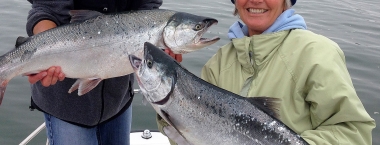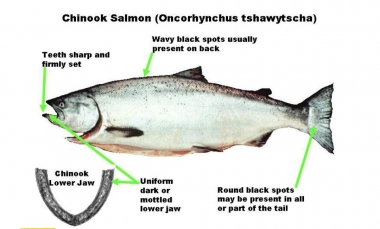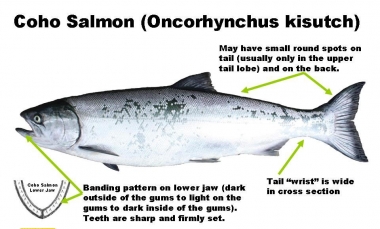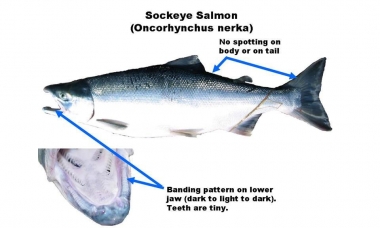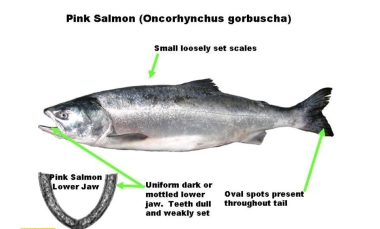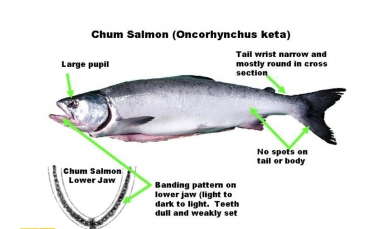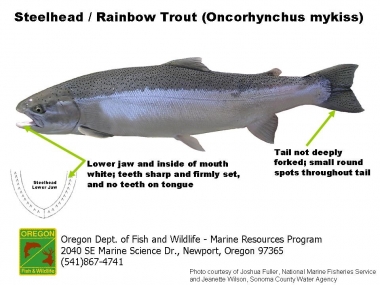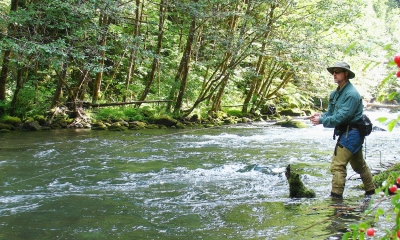
Ocean salmon fishing
Summer is a great time to be on the Pacific chasing ocean salmon. Whether you captain your own ship
or book a commercial charter, there is an ocean salmon of fishing opportunity for you.

Off the coast of Oregon swim several salmon species. Chinook and coho salmon are the two species targeted by the commercial troll (hook and line) and the recreational ocean salmon fisheries. Occasionally, pink, sockeye, and chum salmon, as well as, steelhead and cutthroat trout may make a surprise appearance in the catch.
During the summer, salmon are feeding heavily in offshore waters along the coast. This is in preparation for their return to spawn in freshwater streams. These fish provide a thriving sport fishery from Alaska through central California
Being on a boat is a great way to spend time with family and friends. So invite them for a day of ocean salmon fishing this summer.
Ways to go- your boat or charter
If you're a seasoned angler with your own boat, you've got the flexibility to put in where and when you want. Just be sure you've reviewed all regulations for where to fish, legal gear to use, and what fish you can have aboard before you launch.
If you're a beginner or looking for a relaxing trip with friends or family, consider going on a guided charter boat where you'll be able to catch some fish without having to prepare or provide gear, or clean the fish when you get back to land. There are charter companies out of most of Oregon's ports.
If you want to really dig into the nitty gritty elements of the ocean salmon fishery, you might explore the information that you can find here.
Seasons and regulations
Ocean salmon regulations are finalized in late-April for the “salmon year” that starts on May 1 and concludes the following April. The process begins in March with an open public process through the Pacific Fishery Management Council that involves state and federal agencies, treaty tribes, recreational anglers, and commercial fishing interests to set regulations for ocean waters off Oregon, Washington, and California. The Oregon Fish and Wildlife Commission then can adopt these seasons or apply more stringent regulations, for state waters within three miles from shore.
Check current seasons and regulations.
In-season updates
Fishery managers may make in-season changes to ocean salmon fishing regulations as harvest quotas are being approached. For in-season updates go to the ODFW Fishing Recreation Report and look at the Marine Zone. At the top of the page are regulation updates which will include any regulation updates for ocean salmon fishing. You can also subscribe to receive emails or text messages for topics of interest, such as ocean salmon regulations.
Catch and effort estimates
Check the salmon harvest by port. With weekly updates on the number of angler trips and salmon caught, you'll see where the salmon fishing has been hot.
Salmon identification
Now that you know where to find the regulations, you need to know how to identify the fish you catch as different regulations apply to different species.
- The specific features of the lower jaw including thecolor of the gum line and strength and sharpness of teeth are the most reliable features to ID a salmon. These will also be the characteristics most likely to be used by enforcement officers in deciding whether a violation has occurred and if a citation should be issued.
- Don't rely on body color or spots as a primary feature to identify a salmon caught in the ocean as they are all silver and spotting can vary. Spots and other features generally become more pronounced as a salmon gets closer to its spawning run.
- Don't use the size of a salmon to determine the species. Although the Chinook grows to be the largest of the Pacific salmon, with fish over 50 pounds being caught on occasion, the average size of an ocean caught Chinook is 12-15 pounds. On the other hand, coho have been observed in the 25-30 pound range.

